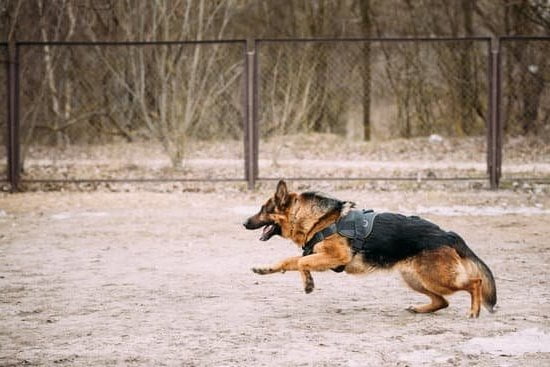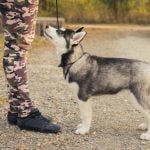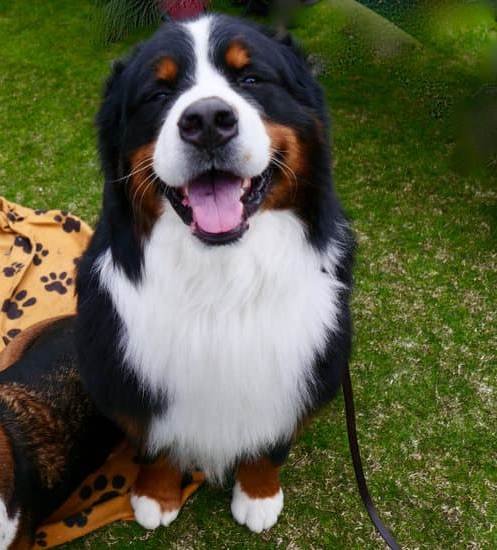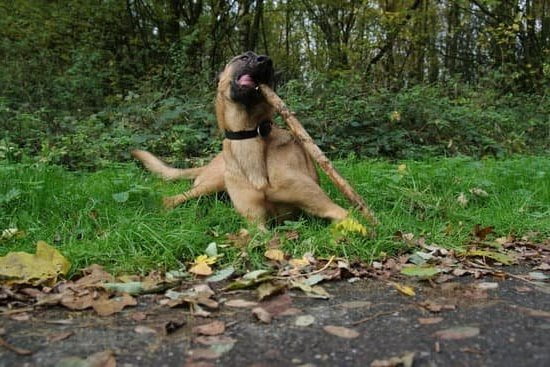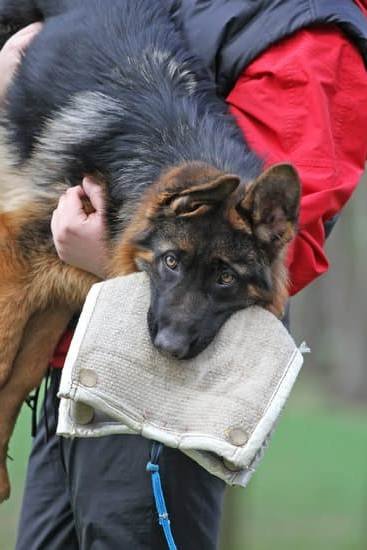Is your dog showing signs of aggression towards other dogs or people? Learning how to train your dog out of dog aggression is essential for the safety and well-being of both your pet and those around them. In this article, we will explore the different types of dog aggression, recognize warning signs, seek professional help when necessary, and provide positive reinforcement training and socialization techniques to modify aggressive behavior.
Understanding the root cause of your dog’s aggression is crucial in addressing the issue effectively. There are various types of dog aggression, including fear-based aggression, territorial aggression, possessive aggression, and more. Recognizing the specific type of aggression your dog is displaying will guide you in implementing appropriate training techniques and interventions.
Recognizing warning signs of aggression in your dog is essential for early intervention. Monitoring behavioral indicators such as growling, barking, lunging, or biting will help you address the issue before it escalates. Seeking professional help from a trained dog trainer or behaviorist may be necessary in some cases to ensure the safety of everyone involved.
Building trust and bonding with your dog is fundamental in addressing aggressive behavior. Establishing a solid relationship based on positive reinforcement and mutual respect creates a foundation for successful training. By using reward-based methods and consistent training, you can modify your dog’s aggressive tendencies and promote positive behavior.
Recognizing the Warning Signs
Another warning sign of dog aggression is their response to certain triggers or situations. For example, if your dog becomes aggressive towards other dogs while on walks or at the park, this could indicate a need for further training and socialization. Additionally, resource guarding – such as growling or snapping when someone approaches their food bowl or toys – is another common indicator of aggression in dogs.
It’s essential for dog owners to stay vigilant and proactive in recognizing these warning signs in order to prevent potential incidents and ensure the safety of both their pet and others around them. Understanding these indicators will help owners take the appropriate steps to address and modify their dog’s aggressive behavior through training and professional guidance when needed.
| Behavioral Indicator | Description |
|---|---|
| Growling, Barking, Showing Teeth | Signs of feeling threatened or defensive. |
| Body Language Cues | |
| Response to Triggers |
Seeking Professional Help
Recognizing the warning signs of dog aggression is crucial in determining when to seek help from a professional. Some behavioral indicators include growling, snapping, and biting, as well as body language such as raised fur, stiff posture, and bared teeth. If your dog exhibits any of these signs towards people or other animals, it may be time to consult a dog trainer or behaviorist.
A professional can provide an objective assessment of your dog’s behavior and develop a customized training plan to address the underlying causes of aggression. They have the knowledge and experience to properly evaluate your dog’s behavior and create an effective behavior modification program.
Keep in mind that seeking professional help does not mean you have failed as a pet owner. It simply means that you are committed to helping your dog overcome their aggressive tendencies through expert guidance. With the right support and guidance, you can work towards improving your dog’s behavior and creating a harmonious relationship between you and your furry companion.
| Warning Signs | Behavioral Indicators |
|---|---|
| Growling | Raised fur |
| Snapping | Stiff posture |
| Biting | Bared teeth |
Building Trust and Bonding
Establishing a strong bond with your dog is essential when working to train them out of aggression. This bond is built on trust, consistency, and positive interactions. Here are some strategies for building trust and bonding with your dog:
- Spend quality time together: Dedicate time each day to interact with your dog through activities such as playtime, training sessions, or simply going for a walk.
- Use positive reinforcement: Reward your dog with treats, praise, and affection when they exhibit good behavior. This will help strengthen the bond between you and reinforce positive behaviors.
- Be consistent in your interactions: Dogs thrive on routine and consistency. By establishing a predictable daily routine, your dog will feel secure and more trusting of you.
In addition to these strategies, it’s important to show empathy towards your dog’s needs and emotions. Understanding how they communicate and respond to different situations will help you build a stronger connection with them. Remember that building trust is a gradual process that requires patience and understanding. By focusing on creating a positive and supportive environment for your dog, you can strengthen the bond between you and work towards modifying any aggressive behavior.
Positive Reinforcement Training
Training a dog out of aggression requires patience, consistency, and positive reinforcement. Positive reinforcement training involves using reward-based methods to modify aggressive behavior in dogs. Instead of punishment or aversive techniques, positive reinforcement focuses on rewarding good behavior to encourage its repetition.
When training a dog out of aggression using positive reinforcement, it is important to identify the triggers that provoke the aggressive behavior. Once the triggers are identified, focus on rewarding calm and non-aggressive behavior in those situations. For example, if your dog is aggressive towards other dogs on walks, start by rewarding your dog for remaining calm and relaxed when in the presence of other dogs.
It’s crucial to be consistent with the rewards and timing when using positive reinforcement. The rewards should be given immediately after the desired behavior is exhibited, so your dog can make the connection between their actions and the reward. Over time, this will help modify their aggressive behavior as they learn that calm and non-aggressive behavior leads to positive outcomes. With patience and dedication, positive reinforcement training can effectively modify a dog’s aggressive behavior.
Socialization Techniques
When dealing with dog aggression, one important aspect to consider is the socialization of your dog. Proper socialization can help reduce aggressive behaviors towards other animals and new environments. Here are some techniques to help introduce your dog to new situations and other animals:
- Gradual exposure: Introduce your dog to new environments and animals gradually. This could mean starting with short periods of time in a new place or keeping a safe distance from other animals at first.
- Positive reinforcement: Use treats and praise to reward your dog for calm and non-aggressive behavior when encountering new environments or other animals. This will help create positive associations with these situations.
- Controlled interactions: When introducing your dog to other animals, ensure that the interactions are controlled and supervised. This may involve using a leash or a barrier at first until you are confident in their behavior.
Socialization should be an ongoing process for your dog, as it is not something that stops once they become adults. Regularly exposing them to different environments, people, and animals can help prevent fear-based aggression and increase their comfort level in various situations.
Remember that every dog is different, so it’s important to be patient and observe your dog’s body language during socialization efforts. If you notice signs of stress or aggression, take a step back and reassess the situation before trying again. With consistency and positive reinforcement, you can help your dog become more comfortable in new environments and around other animals.
Managing Triggers
When dealing with a dog exhibiting aggressive behavior, it is crucial to understand the triggers that provoke such reactions. By managing these triggers effectively, owners can minimize the chances of their dog displaying aggression and create a safer environment for everyone involved.
Identifying Triggers
The first step in managing triggers is to identify what situations or stimuli cause your dog to become aggressive. This could include interactions with other animals, certain noises, specific people, or being in unfamiliar environments. By recognizing these triggers, owners can take proactive steps to avoid or address them before they escalate into aggressive behavior.
Avoidance Techniques
Once the triggers are identified, it is essential to develop strategies for avoiding these situations whenever possible. For example, if your dog becomes aggressive around other dogs, consider walking them in less crowded areas or at times when fewer dogs are likely to be present. Additionally, using physical barriers such as fences or leashes can help prevent your dog from encountering triggering stimuli.
Handling Provoking Situations
In some cases, avoidance may not always be feasible. When faced with a trigger that cannot be avoided, it is important for owners to have effective techniques for handling the situation. This could involve redirecting your dog’s attention through obedience commands, providing distractions or creating distance between your dog and the trigger. It’s important to remain calm and assertive during these moments while also ensuring the safety of yourself and others around you.
By implementing these strategies for managing triggers, pet owners can work towards reducing their dog’s aggressive behavior and create a more harmonious relationship with their furry companion. Always remember that consistency and patience are key when addressing aggression in dogs, and seeking professional guidance may also be beneficial in some cases.
Consistency and Patience
Understanding the Importance of Consistency
Consistency is crucial when training a dog out of aggression. This means using the same commands, routines, and rules every time you interact with your dog. Inconsistency can confuse a dog and undo any progress that has been made in their training. For example, if you allow your dog to jump on visitors sometimes but scold them for it at other times, this sends mixed signals and can lead to continued aggressive behavior.
The Power of Patience
Training a dog out of aggression takes time, and patience is key in this process. Rushing or becoming frustrated can cause setbacks in the training progress. It’s important to remember that changing a dog’s behavior requires consistent effort over an extended period. Be patient with your dog as they learn new behaviors and be patient with yourself as you work through the challenges of training.
Seeking Support for Consistency and Patience
It can be helpful to seek support from a professional trainer or behaviorist to ensure that you are consistently implementing the right techniques and practicing patience effectively. These experts can provide guidance on how to maintain consistency in your training methods and offer advice on how to stay patient during challenging moments. Remember that seeking help is not a sign of failure, but rather a proactive step towards success in training your dog out of aggression.
Monitoring Progress
In conclusion, training a dog out of aggression requires patience, consistency, and a deep understanding of the underlying causes of the behavior. It is essential to closely monitor your dog’s progress and be prepared to adjust your training methods as needed. By recognizing the warning signs of aggression and seeking professional help when necessary, you can establish a solid relationship with your dog based on trust and bonding.
Utilizing positive reinforcement training techniques is key to modifying aggressive behavior in dogs. Reward-based methods are effective in encouraging desired behaviors and discouraging aggression. Additionally, socialization techniques play a crucial role in introducing your dog to new environments and other animals, helping them become more comfortable and less prone to aggressive reactions.
Managing triggers is another important aspect of training a dog out of aggression. By identifying situations that provoke aggressive behavior and implementing strategies for avoidance or handling, you can minimize the likelihood of incidents occurring. Through consistent effort and ongoing monitoring of progress, it is possible to successfully train your dog out of aggression and ensure a safe and harmonious relationship between you and your pet.
Frequently Asked Questions
Can Dog on Dog Aggression Be Cured?
Dog-on-dog aggression can be challenging to completely cure, but it is possible to manage and improve the behavior with proper training and behavior modification techniques. It’s important to work with a professional dog trainer or behaviorist who has experience in dealing with aggression issues to create a tailored plan for your specific situation.
How Do You Fix a Dog That Is Dog Aggressive?
Fixing a dog that is dog aggressive involves a multifaceted approach that includes identifying and addressing the underlying reasons for the aggression, providing proper socialization experiences, positive reinforcement training, and setting clear boundaries and rules for the dog.
It’s essential to consult with a professional to create a personalized plan that addresses the specific triggers and behaviors of the aggressive dog.
How Do I Get My Dog to Stop Attacking My Other Dog?
If your dog is attacking your other dog, it’s crucial to prioritize safety for both dogs and seek professional help immediately. In the meantime, separate the dogs when they are unsupervised, avoid triggering situations or environments, provide mental and physical stimulation for both dogs separately, and consider using positive reinforcement training techniques to redirect their focus onto more positive behaviors.
Seek guidance from a professional trainer or behaviorist who can assist in creating an effective management plan tailored to your dogs’ needs.

Welcome to the blog! I am a professional dog trainer and have been working with dogs for many years. In this blog, I will be discussing various topics related to dog training, including tips, tricks, and advice. I hope you find this information helpful and informative. Thanks for reading!

